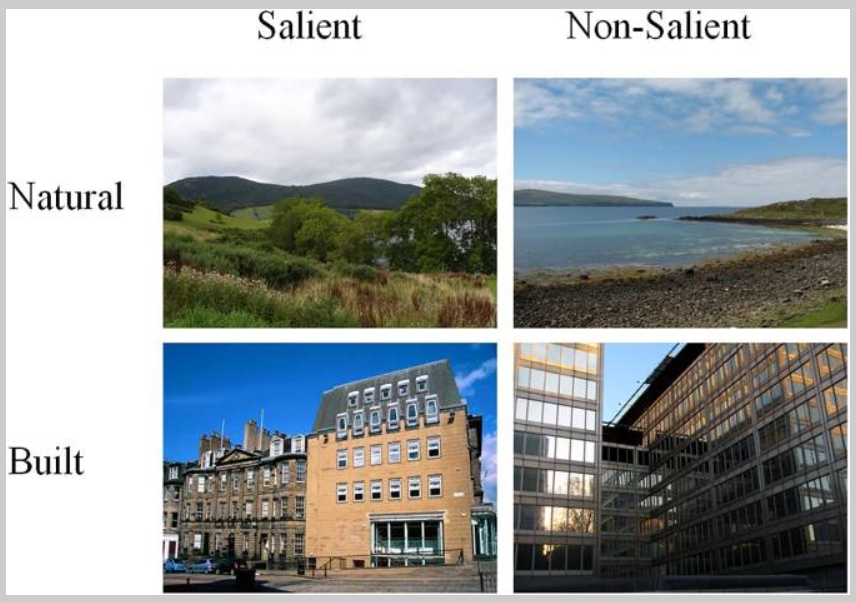Blog

The Biophilic Mind: How Does Nature Restore You?
Many of us have been spending more time in nature recently, often on long walks or runs outdoors. It feels good to get out of the house!
On this blog I have written a lot about the mental and physical benefits of nature, but one thing we have not discussed in-depth is the theoretical mechanism for this relation—that is, how exactly contact with nature improves human health.
A popular proposed mechanism comes from the Attention Restoration Theory (ART; see this Stephen Kaplan paper from 1995), which proposes that the benefits of nature stem from features of nature that do not require directed attention, which in turn allows for cognitive restoration - like giving a busy mind a break.

Researchers who advocate for the ART believe that there are two types of attention – the first is directed attention in which you control your thoughts and attention, which takes effort. The second kind of attention is not directed in which you do not make an effortful bid to control your thoughts or attention. Some researchers call undirected attention fascination. The first kind of directed attention depletes your cognitive resources, whereas the second kind of undirected attention, fascination, restores your cognitive resources.
In this theory, manmade scenes of buildings and cities evoke effortful, directed attention while nature scenes evoke effortless, non-directed attention. This is hypothesized because scenes with buildings or manmade features tend to have sharper lines, more contrast, and smooth surfaces, whereas natural scenes have curves, less contrast, and textured surfaces. These features may make built scenes more instantly recognizable, or salient.
However, until recently this proposed mechanism of the ART had never been tested directly.
This study from 2017 aimed to investigate if built scenes are more salient than natural scenes, and if that salience could explain differences in cognitive resources.
The authors first tested whether built scenes were more salient than natural scenes. They showed participants very brief (13 to 67 milliseconds) flashes of scenes and instructed them to identify whether the scenes as either built or natural. Participants were faster to identify the built scenes than the natural scenes, which suggests that the built scenes were indeed more salient than natural scenes.
Then the authors did an experiment to see if saliency is the mechanism that links natural scenes to cognitive benefits. They did this by measuring participants’ cognitive abilities* before and after showing them a slideshow of either high-salience natural, low-salience natural, high-salience built, or low-salience built scenes. See the blow image from the paper for examples of such scenes.
Source: Van der Jagt, Craig, Brewer, & Pearson (2017)
The authors report that participants who viewed the natural scenes improved their cognitive abilities whereas those who viewed built scenes showed no improvements. Additionally, those who had viewed low-salience scenes (natural or built) showed greater improvements in cognitive abilities than those who viewed the high-salience scenes.
Taken together, those findings indicate that the low-salience nature of natural scenes improves cognitive restoration. Nature helps us rest our minds!
However, I always caution not to over-rely on a single study, as all studies have limitations. Indeed, this study used small, college-aged samples and their measure of cognitive abilities, while well-established, is a single test that cannot stand-in for more comprehensive measures of cognitive and mental health. These critiques apply to most research studies though!
A more specific issue with this study is that, in the final experiment, a stronger mechanistic explanation is lacking. The authors assigned participants to low- or high-saliency groups, and while those in the low-saliency groups did better, it might have been more persuasive to first measure how long it took participants to categorize the images and then used those times to predict cognitive restoration. In that case, you might predict that the presentation of images that people are slower to identify would lead to better cognitive restoration than ones they are faster to identify, and this effect would be strongest for nature scenes.
Even with those critiques, this study is a step in the right direction if we want to better understand the mechanisms of how nature benefits us all!
*For those who are curious about how they operationalized cognitive abilities, they used a test called the Backwards Digit Span. In this task, participants are presented with a series of numbers that they have to remember and report back in reverse order – which gets harder as the numbers increase from 3 digits to 9 digits! You can try this task for yourself here.
Photo credits: Pixabay user suju; Pexels users gosiak1980, Darius Krause, Zichuan, Scott Webb



